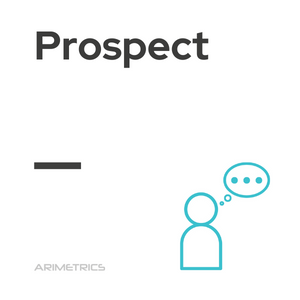Definition:
In marketing, a prospect is a consumer or company that has shown interest in your products or services, but has not yet initiated a business transaction. In other words, it is a potential buyer who has been identified as part of a target group. It is important to distinguish between two key concepts: customer segmentation, which involves defining the target audience, and prospect identification, which are individuals or companies within that segmentation who show active interest.
Differences between prospect and lead
It is important to understand that all prospects are leads, but not all leads become prospects. A lead is any contact who has shown interest in the company by providing their data, but their level of interest or ability to buy is not initially clear. To determine whether a lead can be a prospect, it is necessary to assess its quality. This involves analyzing whether the lead has a real need for the products or services and has the capacity, such as the financial capacity, to purchase them. Once a potential prospect has been identified, the company must invest resources to convert it into a customer, ensuring that the process is profitable. A prospect is a lead with whom the company has interacted in some way, whether through phone calls, emails, online chats or social networks.
How to get a prospect
To transform leads into prospects, a company must implement a strategic acquisition plan. This plan should focus on highlighting the unique value offered to the customer and clearly define the type of product and its price. An effective website is critical to lead generation. It should have attractive forms that capture the attention of visitors.
In addition, advertising campaigns on platforms such as Facebook or Instagram Ads can drive traffic to landing pages that are optimized for converting leads into prospects. Once a lead shows increased interest, communication should be bidirectional, meaning that the lead responds to company interactions, such as emails or calls.
Importance of prospect qualification
Lead qualification is an essential process in marketing and sales, as it allows companies to prioritize their efforts and resources towards those prospects that are most likely to become customers. This process is generally based on specific criteria, such as the prospect’s behavior, interest in the product, buying ability, and alignment with the company’s ideal customer profile.
Using marketing automation tools and customer relationship management (CRM) systems can facilitate lead qualification. These tools help collect and analyze data about prospects, allowing sales teams to focus on those with the highest potential to convert. By optimizing this process, companies can improve efficiency, shorten the sales cycle and increase conversion rates.
Strategies to convert prospects into customers
Converting prospects into customers requires a combination of well-coordinated marketing and sales strategies. One of the most effective strategies is the development of customized content that addresses the specific needs and concerns of prospects. This can include blog articles, studies and webinars that provide value and demonstrate the company’s expertise. In addition, proactive follow-up is essential.
Companies should maintain regular and relevant communication with prospects through emails, phone calls and social media posts. Offering special promotions, product demonstrations or free consultations can also incentivize prospects to move up the sales funnel. Finally, it is important for companies to actively listen to prospects, understand their objections and offer customized solutions. By building strong, trusting relationships, companies can increase the likelihood that prospects will become loyal customers.

